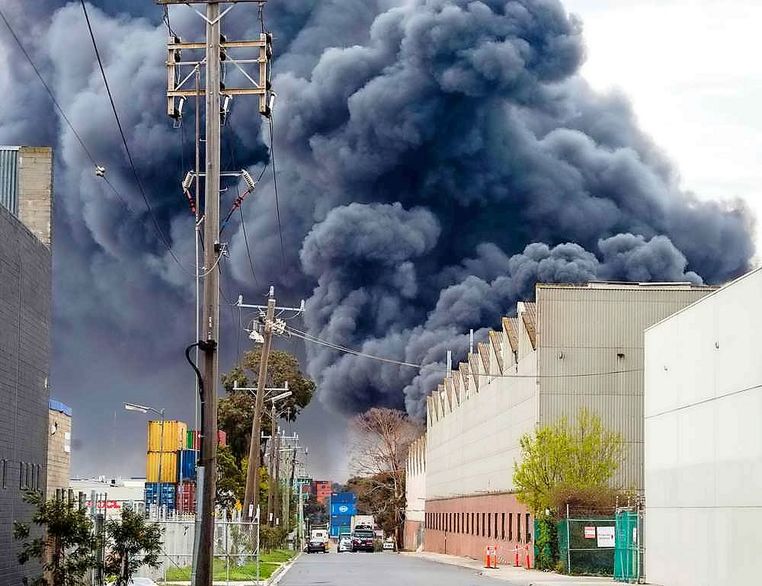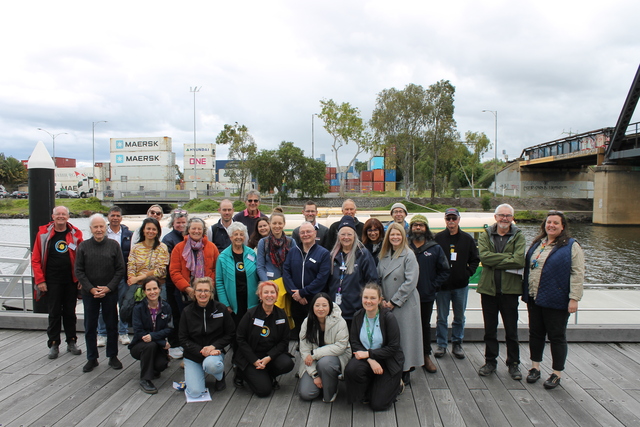Inner-west residents have accused authorities of dragging their feet in responding to the health impacts of last week’s toxic West Footscray fire.
Emotions ran high at a community meeting held at Footscray Town Hall on Thursday night, where residents spoke of ill-health and confusion around the risks to public safety throughout the week since the fire.
The huge blaze caused thick, black, toxic smoke to billow across the western suburbs on Thursday, and was described by authorities as one of the biggest infernos the city has seen in decades.
The fire provoked anger among residents about potential health effects and a commitment from the state government to review authorities’ response to the incident.
But residents and Maribyrnong Council also want the state government to make a firm commitment to funding recovery efforts in areas ravaged by chemical run-off.
Parents living along Stony Creek told the meeting their children have been suffering all week from migraines and sore throats, while others noted bleeding noses and respiratory problems from toxic fumes associated with chemicals leaking into the creek, particularly around popular Cruickshank Park.
Yarraville resident Claire, whose property overlooks Stony Creek, said her family has been unwell and she has had ongoing respiratory issues and burning eyes from the fumes.
“I did not feel like the initial health and safety component was handled well at all,” she said.
Claire said the EPA was warning people to keep away from the contaminated creek, yet signage was poor and the message wasn’t getting through to everyone.
Friends of Cruickshank Park secretary Sue Vittori, donning a black arm band, said her group is mourning for the creek and the impact of the contamination on the park.
“Cruickshank Park is an oasis in an inner-urban semi-industrial area,” she said.
“The Creek is effectively dead at the moment. Our park is a ghost park and this incident has taken away our oasis.”
Ms Vittori said the “pollution disasters” occurring in the west of Melbourne wouldn’t be tolerated in other parts of the city.
EPA chief environmental scientist, Dr Andrea Hinwood, acknowledged that “a large amount of water” and contaminants from the fire-fighting effort has entered Stony Creek and washed all the way down to the Yarra River.
“We have detected concentrations of pollutants that are harmful to aquatic life, in Stony Creek in particular,” she said.
Dr Hinwood said while a number of dead fish and eels have been washing up dead in the backwash area of the creek, the problems appear not to have stretched out into the river and bay.
She said it was too soon to know what the long-term impact would be on the mangroves at the backwash.
Dr Hinwood moved to assure the community that while the fire had taken a hefty environmental toll on the waterways, which were flooded with industrial chemicals, there was little long-term risk to human health.
She said air quality monitoring had continued to show low levels of fine particle pollution.
“We were very, very fortunate that the plume was as high and elevated as it was, because we didn’t really measure an awful lot,” she said.
“We saw some concentrations of particulate matter which is used as an indicator of smoke overnight on Thursday, but that dropped back on Friday.
“Fortunately the concentrations have continued to be good in the past few days.”
Dr Hinwood said although asbestos sampling had come up clear to date, asbestos could still become an issue in coming days as the clean-up gets underway.
“Measures will be put in place to make sure that there is no presence of asbestos leaving the site which might cause an impact.”
WorkSafe executive director of health and safety, Paul Fowler, told the meeting that his authority had been unaware there were dangerous goods being stored in the warehouse.
Maribyrnong Council has set up a webpage to keep the community informed on the recovery efforts.







